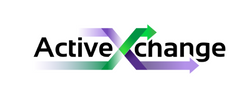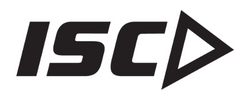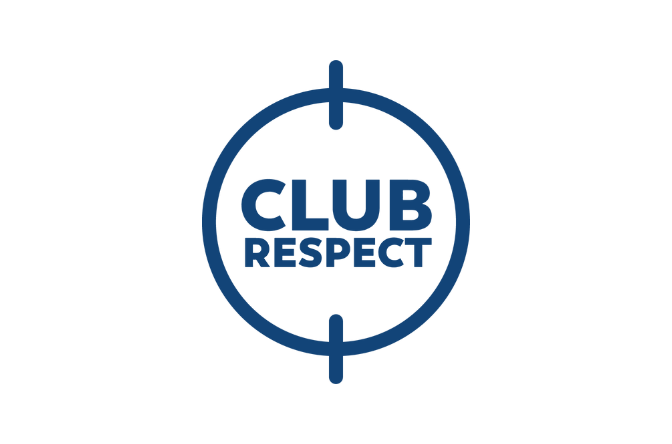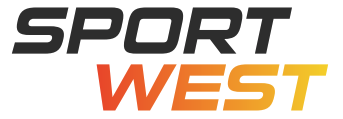
True Sport Child Safeguarding Resources
These resources have been developed to assist WA State Sport Associations to commence or continue their journey of creating and maintaining safe environments for children and young people through the implementation of the National Principles for Child Safe Organisations.
Other Useful Links
Australian Human Rights Commission
Commissioner for Children and Young People
Department of Communities, Child Safe Organisations Knowledge Hub
Department of Local Government, Sport and Cultural Industries
National Office of Child Safety Resource Library
Royal Commission into Institutional Responses to Child Sexual Abuse
NATIONAL PRINCIPLE 1:
Child safety and wellbeing is embedded in organisational leadership, governance and culture.
Child safety and wellbeing is embedded in organisational leadership, governance and culture.
The SSA makes a public commitment to child safety.
An example of an SSA public commitment to child safety.
A child safe culture is championed and modelled at all levels of the SSA, from the top down and the bottom up.
Governance arrangements facilitate implementation of the SSA child safety and wellbeing policy at all levels.
A Code of Conduct provides guidelines for staff and volunteers on expected behavioural standards and responsibilities.
A Code of Conduct Template to guide staff and volunteers on expected behavioural standards and responsibilities.
Risk management strategies focus on preventing, identifying and mitigating risks to children and young people.
Staff and volunteers understand their obligations on information sharing and recordkeeping.
Other Useful Links
NATIONAL PRINCIPLE 2:
Children and young people are informed about their rights, participate in decisions affecting them and are taken seriously.
Children and young people are informed about their rights, participate in decisions affecting them and are taken seriously.
Children and young people are informed about all of their rights, including to safety, information and participation.
The importance of friendships is recognised and support from peers is encouraged, to help children and young people feel safe and be less isolated.
Where relevant to the setting or context, children may be offered access to sexual abuse prevention programs and relevant related information in an age-appropriate way.
Staff and volunteers are attuned to signs of harm and facilitate child-friendly ways for children to express their views, paricipate in decision-making and raise their concerns.
NATIONAL PRINCIPLE 3:
Families and communities are informed and involved in promoting child safety and wellbeing.
Families and communities are informed and involved in promoting child safety and wellbeing.
Families participate in decisions affecting their child.
The SSA engages and openly communicates with families and the community about its child safe approach and relevant information is accesible.
Families and communities have a say in the development and review of the SSA’s policies and practices.
Families, carers and the community are informed about the SSA’s operations and governance.
Other Useful Links
NATIONAL PRINCIPLE 4:
Equity is upheld and diverse needs respected in policy and practice.
Equity is upheld and diverse needs respected in policy and practice.
The SSA, including staff and volunteers, understands the diverse circumstances of children and young people, and provides support and responds to those who are vulnerable.
Children and young people have access to information, support and complaints processes in ways that are culturally safe, accessible and easy to understand.
The SSA pays particular attention to the needs of Aboriginal and Torres Strait Islander children and young people, children and young people with a disability, children and young people from culturally and linguistically diverse backgrounds, those who are unable to live at home, and LGBTIQ+.
NATIONAL PRINCIPLE 5:
People working with children and young people are suitable and supported to reflect child safety and wellbeing values in practice.
People working with children and young people are suitable and supported to reflect child safety and wellbeing values in practice.
Recruitment – including advertising, referee checks and staff and volunteer pre-employment screening – emphasises child safety and wellbeing.
Relevant staff and volunteers have current Working with Children Checks or equivalent backgrounds.
An overview to provide further information to support Fact Sheet 5.2.
Sample WWC Check Policy Template.
Sample WWC Management Process.
Sample WWC Volunteer Declaration.
All staff and volunteers receive an appropriate induction and are aware of their responsibilities to children and young people, including recordkeeping, information sharing and reporting obligations.
Ongoing supervision and people management is focused on child safety and wellbeing.
Other Useful Links
NATIONAL PRINCIPLE 6
Processes to respond to complaints and concerns are child focused.
Processes to respond to complaints and concerns are child focused.
The SSA has an accessible, child-focused complaint handling policy, which clearly outlines the roles and responsibilities of leadership, staff and volunteers; approaches to dealing with different types of complaints; breaches of relevant policies or the Child Safety Code of Conduct; and obligations to act and report.
Effective complaint handling processes are understood by children and young people, families, staff and volunteers, and are culturally safe.
Complaints are taken seriously and responded to promptly and thoroughly.
The SSA has policies and procedures in place for reporting of complaints and concerns to relevant authorities – irrespective of whether such reporting is required by law – and co-operates with law enforcement.
Responding to concerns or disclosures regarding a child or young people being at risk of harm.
Reporting, privacy and employment law obligations are met.
Other Useful Links
NATIONAL PRINCIPLE 7
Staff and volunteers are trained and supported to effectively implement the SSA’s child safety and wellbeing policy.
Staff and volunteers are trained and supported to effectively implement the SSA’s child safety and wellbeing policy.
Staff and volunteers are trained and supported to effectively implement the SSA’s child safety and wellbeing policy.
Staff and volunteers receive training and information to recognise indicators of child harm, including harm caused by other children and young people.
Staff and volunteers receive training and information to respond effectively to issues of child safety and wellbeing and support those who disclose harm.
Staff and volunteers receive training and information on how to build culturally safe environments for children and young people.
Other Useful Links
Complaint Handling Guide: Upholding the rights of children and young people
NATIONAL PRINCIPLE 8
Staff and volunteers identify and mitigate risks in the online and physical environments, without compromising a child’s right to privacy, access to information, social connections and learning opportunities.
Staff and volunteers identify and mitigate risks in the online and physical environments, without compromising a child’s right to privacy, access to information, social connections and learning opportunities.
Staff and volunteers identify and mitigate risks in the online and physical environments, without compromising a child’s right to privacy, access to information, social connections and learning opportunities.
The online environment is used in accordance with the SSA’s Code of Conduct and child safety and wellbeing policy and practices.
Risk management plans consider risks posed by SSA settings, activities and the physical environment.
SSAs that contract facilities and services from third parties have procurement policies that acknowledge the safety of children and young people.
Other Useful Links
NATIONAL PRINCIPLE 9
Implementation of the National Principles for Child Safe Organisations is regularly reviewed and improved.
Implementation of the National Principles for Child Safe Organisations is regularly reviewed and improved.
SSA regularly reviews, evaluates and improves child safe practices.
Complaints, concerns and safety incidents are analysed to identify causes and systemic failures, so as to inform continuous improvement.
The SSA reports on the findings of relevant reviews to staff and volunteers, community and families, and children and young people.
Other Useful Links
NATIONAL PRINCIPLE 10
Policies and procedures document how the organisation is safe for children and young people.
Policies and procedures address all National Child Safe Principles.
Policies and procedures address all National Child Safe Principles.
Policies and procedures are documented and easy to understand.
Leaders champion and model compliance with policies and procedures.
Staff and volunteers understand and implement policies and procedures.
Other Useful Links
SELF ASSESSMENT & ACTION PLAN
The purpose of this resource is to assist SSA’s to commence or continue their journey of creating and maintaining safe environments for children and young people through the implementation of the National Principles for Child Safe Organisations.
WORKING WITH CHILDREN LEGISLATION
This document provides a summary of information about the WWC Act.
This document provides information about the WWC Act; the recent changes to the WWC Act; information about who needs a WWC Card; and what steps your SSA needs to take to comply with the WWC Act.
This document provides a sample WWC Management Process.
This document provides a sample WWC Check Policy and Procedure Template.
This document provides a sample WWC Volunteer Declaration to assist SSA’s in managing the child volunteer and parent volunteer exemption requirements under the WWC Act.
CHILD SAFEGUARDING POSTER
This document provides a template poster for SSA’s to edit and communicate it’s commitment to child safeguarding with it’s members.
REPORTING FLOWCHART
This document provides information about how to respond to concerns or disclosures or young person being at risk of harm.
The information in this document is general in nature and does not constitute legal or professional advice (including advice relating to child safeguarding). SportWest is not liable to users for any loss resulting from the use of this document and accepts no responsibility for the accuracy of the information or your reliance on it. SportWest recommends users seek independent advice as necessary. See www.sportwest.com.au/true-sport-child-safeguarding-disclaimer for the full disclaimer relating to SportWest child safeguarding documents.

SportWest Partners











